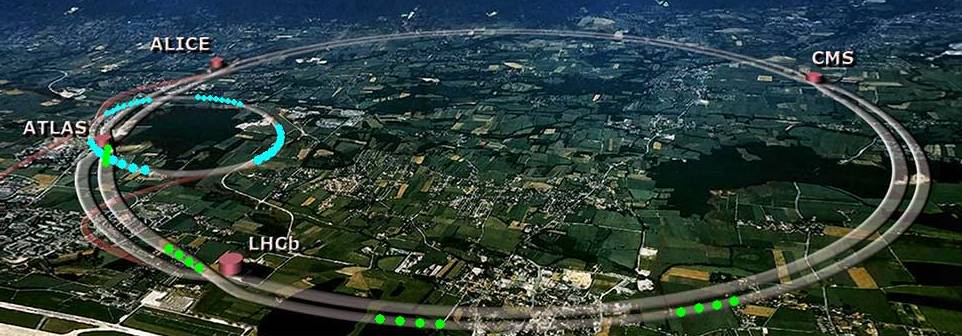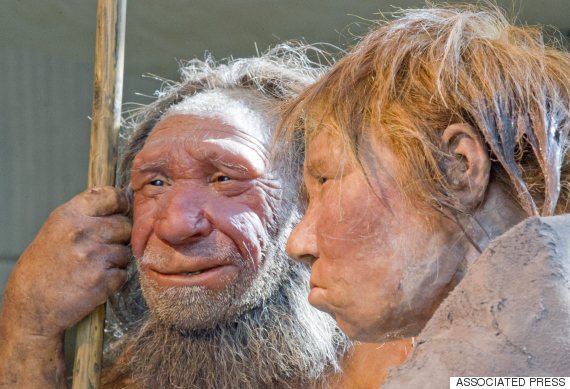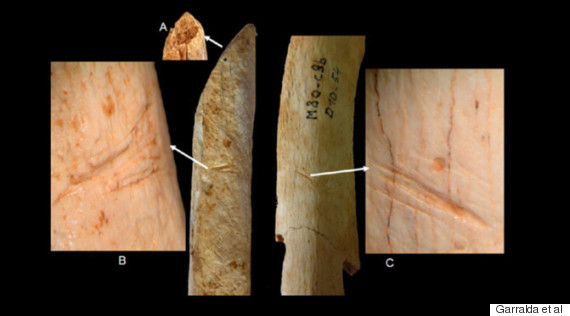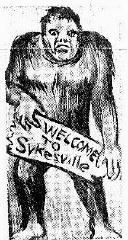
I am appalled but not surprised, that the public accept the utter crap spouted by 'celebrities' over the Large Hadron Collider and accept it as being...well, 'fact'.
A black hole is going to be created and suck us all in...and worse.
The Cern Press Office has corrected and shot down in flames the various silly claims and you can find more at their site with additional links:
http://press.web.cern.ch/backgrounders/safety-lhc
But read this:
The safety of the LHC
The
Large Hadron Collider
(LHC) can achieve an energy that no other particle accelerators have
reached before, but Nature routinely produces higher energies in
cosmic-ray collisions. Concerns about the safety of whatever may be
created in such high-energy particle collisions have been addressed for
many years. In the light of new experimental data and theoretical
understanding, the LHC Safety Assessment Group (LSAG) has updated a
review of the analysis made in 2003 by the LHC Safety Study Group, a
group of independent scientists.
LSAG reaffirms and extends the conclusions of the 2003 report that
LHC collisions present no danger and that there are no reasons for
concern. Whatever the LHC will do, Nature has already done many times
over during the lifetime of the Earth and other astronomical bodies. The
LSAG report has been reviewed and endorsed by CERN’s Scientific Policy
Committee, a group of external scientists that advises CERN’s governing
body, its Council.
The following summarizes the main arguments given in the
LSAG report.
Anyone interested in more details is encouraged to consult it directly,
and the technical scientific papers to which it refers.
Cosmic rays
The LHC, like other particle accelerators, recreates the natural phenomena of
cosmic rays
under controlled laboratory conditions, enabling them to be studied in
more detail. Cosmic rays are particles produced in outer space, some of
which are accelerated to energies far exceeding those of the LHC. The
energy and the rate at which they reach the Earth’s atmosphere have been
measured in experiments for some 70 years. Over the past billions of
years, Nature has already generated on Earth as many collisions as about
a million LHC experiments – and the planet still exists. Astronomers
observe an enormous number of larger astronomical bodies throughout the
Universe, all of which are also struck by cosmic rays. The Universe as a
whole conducts more than 10 million million LHC-like experiments per
second. The possibility of any dangerous consequences contradicts what
astronomers see - stars and galaxies still exist.
Microscopic black holes
Nature forms black holes when certain stars, much larger than our
Sun, collapse on themselves at the end of their lives. They concentrate a
very large amount of matter in a very small space. Speculations about
microscopic black holes at the LHC refer to particles produced in the
collisions of pairs of protons, each of which has an energy comparable
to that of a mosquito in flight. Astronomical black holes are much
heavier than anything that could be produced at the LHC.
According to the well-established properties of gravity, described by
Einstein’s relativity, it is impossible for microscopic black holes to
be produced at the LHC. There are, however, some speculative theories
that predict the production of such particles at the LHC. All these
theories predict that these particles would disintegrate immediately.
Black holes, therefore, would have no time to start accreting matter and
to cause macroscopic effects.
Although theory predicts that microscopic black holes decay rapidly,
even hypothetical stable black holes can be shown to be harmless by
studying the consequences of their production by cosmic rays. Whilst
collisions at the LHC differ from cosmic-ray collisions with
astronomical bodies like the Earth in that new particles produced in LHC
collisions tend to move more slowly than those produced by cosmic rays,
one can still demonstrate their safety. The specific reasons for this
depend whether the black holes are electrically charged, or neutral.
Many stable black holes would be expected to be electrically charged,
since they are created by charged particles. In this case they would
interact with ordinary matter and be stopped while traversing the Earth
or Sun, whether produced by cosmic rays or the LHC. The fact that the
Earth and Sun are still here rules out the possibility that cosmic rays
or the LHC could produce dangerous charged microscopic black holes. If
stable microscopic black holes had no electric charge, their
interactions with the Earth would be very weak. Those produced by cosmic
rays would pass harmlessly through the Earth into space, whereas those
produced by the LHC could remain on Earth. However, there are much
larger and denser astronomical bodies than the Earth in the Universe.
Black holes produced in cosmic-ray collisions with bodies such as
neutron stars and white dwarf stars would be brought to rest. The
continued existence of such dense bodies, as well as the Earth, rules
out the possibility of the LHC producing any dangerous black holes.
Strangelets
Strangelet is the term given to a hypothetical microscopic lump of
‘strange matter’ containing almost equal numbers of particles called up,
down and strange quarks. According to most theoretical work,
strangelets should change to ordinary matter within a thousand-millionth
of a second. But could strangelets coalesce with ordinary matter and
change it to strange matter? This question was first raised before the
start up of the Relativistic Heavy Ion Collider, RHIC, in 2000 in the
United States. A study at the time showed that there was no cause for
concern, and RHIC has now run for eight years, searching for strangelets
without detecting any. At times, the LHC will run with beams of heavy
nuclei, just as RHIC does. The LHC’s beams will have more energy than
RHIC, but this makes it even less likely that strangelets could form. It
is difficult for strange matter to stick together in the high
temperatures produced by such colliders, rather as ice does not form in
hot water. In addition, quarks will be more dilute at the LHC than at
RHIC, making it more difficult to assemble strange matter. Strangelet
production at the LHC is therefore less likely than at RHIC, and
experience there has already validated the arguments that strangelets
cannot be produced.
The analysis of the first LHC data from heavy ion collisions has now
confirmed the key ingredients used in the LSAG report to evaluate the
upper limit on the production of hypothetical strangelets. For more
details see this addendum to the LSAG report:
Implications of LHC heavy ion data for multi-strange baryon production (2011)
Vacuum bubbles
There have been speculations that the Universe is not in its most
stable configuration, and that perturbations caused by the LHC could tip
it into a more stable state, called a vacuum bubble, in which we could
not exist. If the LHC could do this, then so could cosmic-ray
collisions. Since such vacuum bubbles have not been produced anywhere in
the visible Universe, they will not be made by the LHC.
Magnetic monopoles
Magnetic monopoles are hypothetical particles with a single magnetic
charge, either a north pole or a south pole. Some speculative theories
suggest that, if they do exist, magnetic monopoles could cause protons
to decay. These theories also say that such monopoles would be too heavy
to be produced at the LHC. Nevertheless, if the magnetic monopoles were
light enough to appear at the LHC, cosmic rays striking the Earth’s
atmosphere would already be making them, and the Earth would very
effectively stop and trap them. The continued existence of the Earth and
other astronomical bodies therefore rules out dangerous proton-eating
magnetic monopoles light enough to be produced at the LHC.
Other aspects of LHC safety:
Concern has recently been expressed that a 'runaway fusion reaction'
might be created in the LHC carbon beam dump. The safety of the LHC beam
dump had previously been reviewed by the relevant regulatory
authorities of the CERN host states, France and Switzerland. The
specific concerns expressed more recently have been addressed in a
technical memorandum
by Assmann et al. As they point out, fusion reactions can be maintained
only in material compressed by some external pressure, such as that
provided by gravity inside a star, a fission explosion in a
thermonuclear device, a magnetic field in a Tokamak, or by continuing
isotropic laser or particle beams in the case of inertial fusion. In the
case of the LHC beam dump, it is struck once by the beam coming from a
single direction. There is no countervailing pressure, so the dump
material is not compressed, and no fusion is possible.
Concern has been expressed that a 'runaway fusion reaction' might be
created in a nitrogen tank inside the LHC tunnel. There are no such
nitrogen tanks. Moreover, the arguments in the previous paragraph prove
that no fusion would be possible even if there were.
Finally, concern has also been expressed that the LHC beam might
somehow trigger a 'Bose-Nova' in the liquid helium used to cool the LHC
magnets. A
study (link is external) by Fairbairn and McElrath has clearly shown there is no possibility of the LHC beam triggering a fusion reaction in helium.
We recall that 'Bose-Novae' are known to be related to chemical
reactions that release an infinitesimal amount of energy by nuclear
standards. We also recall that helium is one of the most stable elements
known, and that liquid helium has been used in many previous particle
accelerators without mishap. The facts that helium is chemically inert
and has no nuclear spin imply that no 'Bose-Nova' can be triggered in
the superfluid helium used in the LHC.
Comments on the papers by Giddings and Mangano, and by LSAG
The papers by
Giddings and Mangano (link is external) and
LSAG (link is external)
demonstrating the safety of the LHC have been studied, reviewed and
endorsed by leading experts from the CERN Member States, Japan, Russia
and the United States, working in astrophysics, cosmology, general
relativity, mathematics, particle physics and risk analysis, including
several Nobel Laureates in Physics. They all agree that the LHC is safe.
The
paper (link is external) by Giddings and Mangano has been peer-reviewed by anonymous experts in astrophysics and particle physics and
published (link is external)
in the professional scientific journal Physical Review D. The American
Physical Society chose to highlight this as one of the most significant
papers it has published recently, commissioning a
commentary (link is external)
by Prof. Peskin from the Stanford Linear Accelerator Laboratory in
which he endorses its conclusions. The Executive Committee of the
Division of Particles and Fields of the American Physical Society has
issued a
statement (link is external) endorsing the LSAG report.
The LSAG report has been
published (link is external) by the UK Institute of Physics in its publication Journal of Physics G. The conclusions of the LSAG report were endorsed in a
press release (link is external) that announced this publication.
The conclusions of LSAG have also been
endorsed (link is external)
by the Particle and Nuclear Physics Section (KET) of the German
Physical Society. A translation into German of the complete LSAG report
may be found on the KET website, as well as
here. (A translation into French of the complete LSAG report is also
available.)
Thus, the conclusion that LHC collisions are completely safe has been
endorsed by the three respected professional societies of physicists
that have reviewed it, which rank among the most highly respected
professional societies in the world.
World-renowned experts in astrophysics, cosmology, general
relativity, mathematics, particle physics and risk analysis, including
several Nobel Laureates in Physics, have also expressed clear individual
opinions that LHC collisions are not dangerous:
"To think that LHC particle collisions at high
energies can lead to dangerous black holes is rubbish. Such rumors were
spread by unqualified people seeking sensation or publicity."
Academician Vitaly Ginzburg, Nobel Laureate in Physics, Lebedev Institute, Moscow, and Russian Academy of Sciences
"The operation of the LHC is safe, not only in the
old sense of that word, but in the more general sense that our most
qualified scientists have thoroughly considered and analyzed the risks
involved in the operation of the LHC. [Any concerns] are merely
hypothetical and speculative, and contradicted by much evidence and
scientific analysis."
Prof. Sheldon Glashow, Nobel Laureate in Physics, Boston University,
Prof. Frank Wilczek, Nobel Laureate in Physics, Massachusetts Institute of Technology,
Prof. Richard Wilson, Mallinckrodt Professor of Physics, Harvard University
"The world will not come to an end when the LHC turns
on. The LHC is absolutely safe. ... Collisions releasing greater energy
occur millions of times a day in the earth's atmosphere and nothing
terrible happens."
Prof. Steven Hawking, Lucasian Professor of Mathematics, Cambridge University
"Nature has already done this experiment. ... Cosmic
rays have hit the moon with more energy and have not produced a black
hole that has swallowed up the moon. The universe doesn't go around
popping off huge black holes."
Prof. Edward Kolb, Astrophysicist, University of Chicago
"I certainly have no worries at all about the
purported possibility of LHC producing microscopic black holes capable
of eating up the Earth. There is no scientific basis whatever for such
wild speculations."
Prof. Sir Roger Penrose, Former Rouse Ball Professor of Mathematics, Oxford University
"There is no risk [in LHC collisions, and] the LSAG report is excellent."
Prof. Lord Martin Rees, UK Astronomer Royal and President of the Royal Society of London
"Those who have doubts about LHC safety should read
LSAG report where all possible risks were considered. We can be sure
that particle collisions at the LHC cannot lead to a catastrophic
consequences."
Academician V.A. Rubakov, Institute for Nuclear Research, Moscow, and Russian Academy of Sciences
"We fully endorse the conclusions of the LSAG report:
there is no basis for any concerns about the consequences of new
particles or forms of matter that could possibly be produced at the LHC."
R. Aleksan et al., the 20 external members of the
CERN Scientific Policy Committee, including Prof. Gerard 't Hooft,
Nobel Laureate in Physics.
The overwhelming majority of physicists agree that microscopic black
holes would be unstable, as predicted by basic principles of quantum
mechanics. As discussed in the
LSAG report (link is external),
if microscopic black holes can be produced by the collisions of quarks
and/or gluons inside protons, they must also be able to decay back into
quarks and/or gluons. Moreover, quantum mechanics predicts specifically
that they should decay via Hawking radiation.
Nevertheless, a few papers have suggested that microscopic black holes might be stable. The
paper (link is external) by Giddings and Mangano and the
LSAG report (link is external)
analyzed very conservatively the hypothetical case of stable
microscopic black holes and concluded that even in this case there would
be no conceivable danger. Another
analysis (link is external)
with similar conclusions has been documented by Dr. Koch, Prof.
Bleicher and Prof. Stoecker of Frankfurt University and GSI, Darmstadt,
who conclude:
"We discussed the logically possible black hole evolution paths.
Then we discussed every single outcome of those paths and showed that
none of the physically sensible paths can lead to a black hole disaster
at the LHC."
Professor Roessler (who has a medical degree and was formerly a chaos
theorist in Tuebingen) also raised doubts on the existence of Hawking
radiation. His ideas have been refuted by Profs. Nicolai (Director at
the Max Planck Institute for Gravitational Physics -
Albert-Einstein-Institut - in Potsdam) and Giulini, whose
report (link is external) (see
here for the English translation, and
here
for further statements) point to his failure to understand general
relativity and the Schwarzschild metric, and his reliance on an
alternative theory of gravity that was disproven in 1915. Their verdict:
"[Roessler's] argument is not valid; the argument is not self-consistent."
The paper of Prof. Roessler has also been criticized by Prof. Bruhn of the Darmstadt University of Technology, who
concludes (link is external) that:
"Roessler's misinterpretation of the Schwarzschild metric
[renders] his further considerations ... null and void. These are not
papers that could be taken into account when problems of black holes are
discussed."
A hypothetical scenario for possibly dangerous metastable black holes has recently been
proposed (link is external) by Dr. Plaga. The conclusions of this work have been shown to be inconsistent in a
second paper (link is external)
by Giddings and Mangano, where it is also stated that the safety of
this class of metastable black hole scenarios is already established by
their
original work (link is external).















